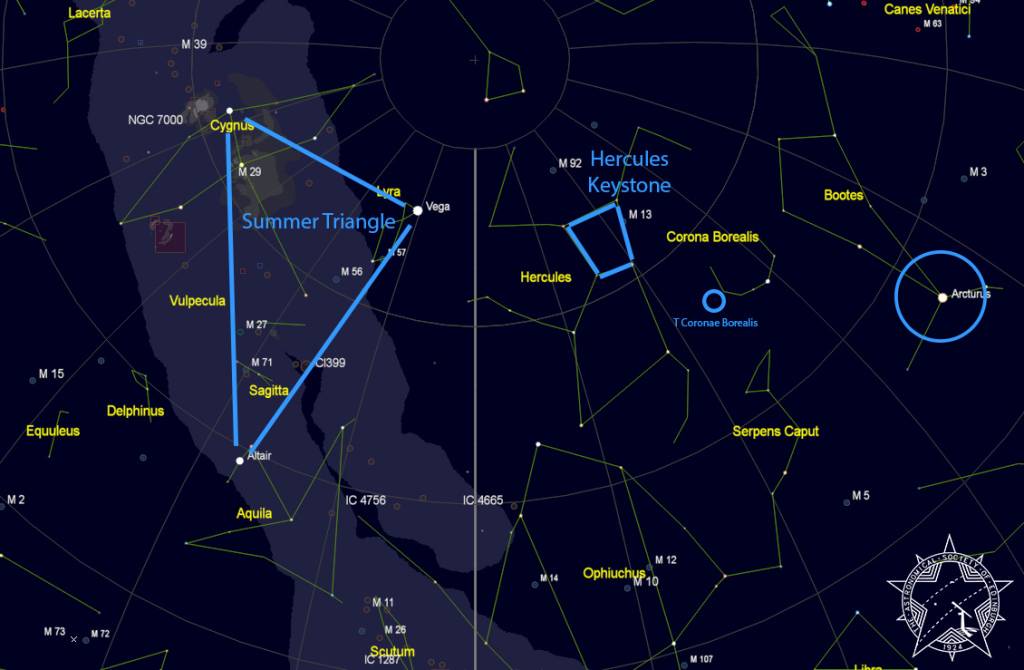Attention, stargazers! An extraordinary event is on the cosmic horizon. T Coronae Borealis (T CrB), affectionately known as the “Blaze Star,” is poised for a spectacular outburst, potentially illuminating our night skies any time now. Such eruptions occur approximately every 80 years, with the last in 1946. This means we are on the cusp of witnessing a phenomenon that few generations experience.Jacksonville Journal-Courier+3Space.com+3Forbes+3
What is T Coronae Borealis?
T CrB is a recurrent nova located in the constellation Corona Borealis. It consists of a white dwarf and a red giant in a binary system. Over time, the white dwarf accumulates material from its companion until it ignites in a thermonuclear explosion, causing a dramatic increase in brightness. During its outburst, T CrB can brighten from magnitude +10 to about +2, making it as luminous as the North Star, Polaris .BBC Sky at Night+1The US Sun+1
When and Where to Observe
Predicting the exact timing of such eruptions is challenging. Some astronomers anticipate the nova could occur around March 27, 2025, while others suggest alternative dates like November 10, 2025, or even in 2026 or 2027. The only certainty is that vigilance is key.The US Sun+1Jacksonville Journal-Courier+1

To locate T CrB from Brisbane, Australia, follow these steps:Star Walk+3Space.com+3Astronomy Magazine+3
- Identify the Constellation: Corona Borealis, also known as the Northern Crown, is a semicircular arc of stars situated between the constellations Boötes and Hercules.NASA
- Optimal Viewing Time: In Brisbane, Corona Borealis is best viewed in the northern sky during the winter months, particularly from June to August, when it reaches its highest point above the horizon.
- Locate T CrB: Within Corona Borealis, T CrB is positioned near the center of the arc. During its nova phase, it will be one of the brightest stars in the constellation, making it relatively easy to spot with the naked eye.Space.com
A Glimpse into the Past
It’s fascinating to consider that the light from T CrB’s eruption has traveled approximately 3,000 light-years to reach us. This means the event we’re about to witness actually occurred around 1,000 BCE, but the light is only now arriving at Earth. Observing this nova is akin to peering back in time, offering a direct connection to ancient cosmic events.
Stay Alert and Share Your Observations
Given the unpredictability of T CrB’s eruption, we encourage all astronomy enthusiasts to regularly observe the Corona Borealis constellation. Keep your binoculars and telescopes ready, and don’t forget to document and share your observations with the community.Astronomy Magazine+1Star Walk+1
For more detailed information on how to locate and observe T CrB, refer to this guide:
Let’s come together to witness this rare and magnificent display of our universe’s dynamic nature. Clear skies and happy observing!
#TCoronaeBorealis #BlazeStar #Nova2025 #Astrophotography #NightSky #AstronomyLovers #CelestialEvent #AstromanAu


